The following shows how to add subkeys to HKEY_CLASSES_ROOT\CLSID, as well as, values and data. I searched the (Win10) registry, found subkeys with similar names, and followed the structure of existing subkeys.
The structure of the subkey that is created in the code below is:

Create a new Windows Forms App (.NET Framework) project (name: RegistryCreateSubkeyAndValues)
Add an Application Manifest to your project
Note: This is used to prompt the user to execute the program as Administrator.
- In VS menu, click Project
- Select Add New Item...
- Select Application Manifest File (Windows Only) (name: app.manifest)
- Click Add
In app.manifest, replace
<requestedExecutionLevel level="asInvoker" uiAccess="false" />
with
<requestedExecutionLevel level="requireAdministrator" uiAccess="false" />
As can be seen in the image above, the subkeys are nested. To be in harmony with this concept, I'll create a variety of nested classes to hold the necessary information.
I'll name the top-level class RegClsid which will be created last to avoid errors showing in Visual Studio. To keep the class names organized, I've chosen to prepend each class name with its parent's name.
Create a class (name: RegClsidInprocServer32.cs) - name is RegClsid + InprocServer32 => RegClsidInprocServer32
public class RegClsidInprocServer32
{
public string Default { get; set; }
public string ThreadingModel { get; set; }
}
Create a class (name: RegClsidProgId.cs) - name is RegClsid + ProgId => RegClsidProgId
public class RegClsidProgId
{
public string Default { get; set; }
}
Create a class (name: RegClsIdTypeLib.cs) - name is RegClsid + TypeLib => RegClsidTypeLib
public class RegClsIdTypeLib
{
public string Default { get; set; }
}
Create a class (name: RegClsIdVersion.cs) - name is RegClsid + Version => RegClsidVersion
public class RegClsIdVersion
{
public string Default { get; set; }
}
Create a class (name: RegClsid.cs)
public class RegClsid
{
public string EntryGuid { get; set; }
public RegClsidInprocServer32 InprocServer32 { get; set; } = new RegClsidInprocServer32();
public RegClsidProgId ProgId { get; set; } = new RegClsidProgId();
public RegClsIdTypeLib TypeLib { get; set; } = new RegClsIdTypeLib();
public RegClsIdVersion Version { get; set; } = new RegClsIdVersion();
}
Add the following using directives:
The following shows how to add/update a registry subkey in HKEY_CLASSES_ROOT\CLSID. using statements are used to ensure that each RegistryKey is properly disposed.
Here's an illustration of the code below. Notice the nesting of the using statements and how the return value is used in each of the nested using statements.
AddUpdateRegClsid:
private bool AddUpdateRegClsid(RegClsid clsid, RegistryView regView = RegistryView.Registry64)
{
//open HKCR hive using the specified view
using (RegistryKey localKey = RegistryKey.OpenBaseKey(RegistryHive.ClassesRoot, regView))
{
if (localKey != null)
{
//open subkey with write permissions
using (RegistryKey clsidKey = localKey.OpenSubKey(@"CLSID", true))
{
if (clsidKey != null)
{
//create or open subkey with write permissions
using (RegistryKey guidKey = clsidKey.CreateSubKey(clsid.EntryGuid, true))
{
if (guidKey != null)
{
//create or open subkey 'InprocServer32' with write permissions
//HKCR\Clsid\<entryGuid>\InprocServer32
using (RegistryKey inprocServer32Key = guidKey.CreateSubKey("InprocServer32", true))
{
if (inprocServer32Key != null)
{
//default
inprocServer32Key.SetValue("", clsid.InprocServer32.Default, RegistryValueKind.String);
//ThreadingModel
inprocServer32Key.SetValue("ThreadingModel", clsid.InprocServer32.ThreadingModel, RegistryValueKind.String);
}
}
//create or open subkey 'ProgID' with write permissions
//HKCR\Clsid\<entryGuid>\ProgID
using (RegistryKey progidKey = guidKey.CreateSubKey("ProgID", true))
{
if (progidKey != null)
{
//default
progidKey.SetValue("", clsid.ProgId.Default, RegistryValueKind.String);
}
}
//create or open subkey 'TypeLib' with write permissions
//HKCR\Clsid\<entryGuid>\TypeLib
using (RegistryKey typeLibKey = guidKey.CreateSubKey("TypeLib", true))
{
if (typeLibKey != null)
{
//default
typeLibKey.SetValue("", clsid.TypeLib.Default, RegistryValueKind.String);
}
}
//create or open subkey 'Version' with write permissions
//HKCR\Clsid\<entryGuid>\Version
using (RegistryKey versionKey = guidKey.CreateSubKey("Version", true))
{
if (versionKey != null)
{
//default
versionKey.SetValue("", clsid.Version.Default, RegistryValueKind.String);
}
}
return true;
}
}
}
}
}
}
return false;
}
Usage 1:
//ToDo: replace values below with desired values
//create new instance and set values
RegClsid clsid = new RegClsid()
{
EntryGuid = "{3BDAAC43-E734-11D5-93AF-00105A990292}",
InprocServer32 = new RegClsidInprocServer32()
{
Default = "My InprocServer32 default",
ThreadingModel = "Both"
},
ProgId = new RegClsidProgId()
{
Default = "My ProgID default"
},
TypeLib = new RegClsIdTypeLib()
{
Default = "My TypeLib default"
},
Version = new RegClsIdVersion()
{
Default = "My Version default"
}
};
//add CLSID entry to registry
bool result = AddUpdateRegClsid(clsid);
if (result)
MessageBox.Show($@"'HKEY_Classes_Root\CLSID\{clsid.EntryGuid}' successfully added/updated.");
else
MessageBox.Show($@"Error: Failed to add/update 'HKEY_Classes_Root\CLSID\{clsid.EntryGuid}'.");
Usage 2:
//ToDo: replace values below with desired values
//InprocServer32 - create new instance and set value(s)
RegClsidInprocServer32 inprocServer32 = new RegClsidInprocServer32()
{
Default = "My InprocServer32 default",
ThreadingModel = "Both"
};
//ProgID - create new instance and set values
RegClsidProgId progId = new RegClsidProgId()
{
Default = "My ProgID default"
};
//TypeLib - create new instance and set value(s)
RegClsIdTypeLib typeLib = new RegClsIdTypeLib()
{
Default = "My TypeLib default"
};
//Version - create new instance and set value(s)
RegClsIdVersion version = new RegClsIdVersion()
{
Default = "My Version default"
};
//Clsid - create new instance and set values
RegClsid clsid = new RegClsid()
{
EntryGuid = "{3BDAAC43-E734-11D5-93AF-00105A990292}",
InprocServer32 = inprocServer32,
ProgId = progId,
TypeLib = typeLib,
Version = version
};
//add CLSID entry to registry
bool result = AddUpdateRegClsid(clsid);
if (result)
MessageBox.Show($@"'HKEY_Classes_Root\CLSID\{clsid.EntryGuid}' successfully added/updated.");
else
MessageBox.Show($@"Error: Failed to add/update 'HKEY_Classes_Root\CLSID\{clsid.EntryGuid}'.");
Usage 3:
//ToDo: replace values below with desired values
//InprocServer32 - create new instance and set value(s)
RegClsidInprocServer32 inprocServer32 = new RegClsidInprocServer32();
inprocServer32.Default = "My InprocServer32 default";
inprocServer32.ThreadingModel = "Both";
//ProgID - create new instance and set value(s)
RegClsidProgId progId = new RegClsidProgId();
progId.Default = "My ProgID default";
//TypeLib - create new instance and set value(s)
RegClsIdTypeLib typeLib = new RegClsIdTypeLib();
typeLib.Default = "My TypeLib default";
//Version - create new instance and set value(s)
RegClsIdVersion version = new RegClsIdVersion();
version.Default = "My Version default";
//Clsid - create new instance and set values
RegClsid clsid = new RegClsid();
clsid.EntryGuid = "{3BDAAC43-E734-11D5-93AF-00105A990292}";
clsid.InprocServer32 = inprocServer32;
clsid.ProgId= progId;
clsid.TypeLib = typeLib;
clsid.Version = version;
//add CLSID entry to registry
bool result = AddUpdateRegClsid(clsid);
if (result)
MessageBox.Show($@"'HKEY_Classes_Root\CLSID\{clsid.EntryGuid}' successfully added/updated.");
else
MessageBox.Show($@"Error: Failed to add/update 'HKEY_Classes_Root\CLSID\{clsid.EntryGuid}'.");
Here's the result of executing the code above:

The following shows how to delete the registry subkey and child subkeys from HKEY_CLASSES_ROOT\CLSID.
DeleteRegClsid:
private bool DeleteRegClsid(string entryClsid, RegistryView regView = RegistryView.Registry64)
{
//open HKCR hive using the specified view
using (RegistryKey localKey = RegistryKey.OpenBaseKey(RegistryHive.ClassesRoot, regView))
{
if (localKey != null)
{
//open subkey with write permissions
using (RegistryKey clsidKey = localKey.OpenSubKey(@"CLSID", true))
{
if (clsidKey != null)
{
//delete subkey and all child subkeys
clsidKey.DeleteSubKeyTree(entryClsid);
return true;
}
}
}
}
return false;
}
Usage:
string entryGuid = "{3BDAAC43-E734-11D5-93AF-00105A990292}";
bool result = DeleteRegClsid(entryGuid);
if (result)
MessageBox.Show($@"'HKEY_Classes_Root\CLSID\{entryGuid}' successfully deleted.");
else
MessageBox.Show($@"Error: Failed to delete 'HKEY_Classes_Root\CLSID\{entryGuid}'.");
Resources:






